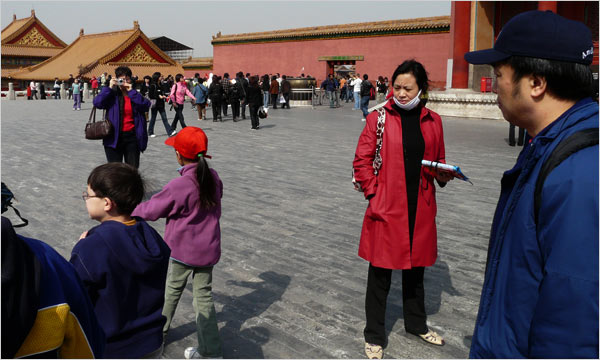 There is an interesting story in The New York Times a week or so ago told by a Chinese-American mother, Vivian Toy, on a two week vacation with her kids and her white husband in Beijing titled, “Stopping Traffic in the People’s Republic:”
There is an interesting story in The New York Times a week or so ago told by a Chinese-American mother, Vivian Toy, on a two week vacation with her kids and her white husband in Beijing titled, “Stopping Traffic in the People’s Republic:”
“…a young [Chinese] woman pulled down her antipollution mask and stared, open-mouthed, at my 7-year-old son, Patrick. She didn’t seem dangerous, just amazed, so I let the moment pass and we moved along to the next stop on our tour. But the next day, during a visit to the Great Wall, my maternal defenses kicked in when another woman approached us. Without asking permission, she sidled up to my 11-year-old son, Aidan, and draped her arm around him. Her husband was about to snap a quick photograph when I shouted furiously at her in halting Mandarin to get away from my son. By then, it had become clear why my children were attracting so much attention. They look Chinese, but not exactly. They look Western, but not quite. What they really look like is what they are: a blend of me, a Chinese-American, and my husband, a blond 6-footer of English and Irish descent.”
In a country that is 93% Han Chinese, there aren’t exactly a lot of bi-racial children. Ms. Toy did say that even in New York City, she had gotten questions from strangers who asked her kids, perhaps uncomfortably and unpolitely, “What are you?”
I have a Japanese-British friend from college who sort of looked Japanese when I first met him, I thought “Chick” did not sound very Japanese to me! I had a co-worker once who I wondered was bi-racial, since she had a Japanese last name and maybe could have been hapa. Later I found out that she was married to a Japanese-American, and she often said a lot of people who met her for the first time were surprised to meet a white woman with a Japanese last name.
No doubt, as more inter-racial marriages occur, the question of “What are you?” will increasingly occur with one’s off spring. The stereotypes or expectations we might associate with simply a last name might surprise us once you meet someone in person, rather than converse with the over the phone and email.








